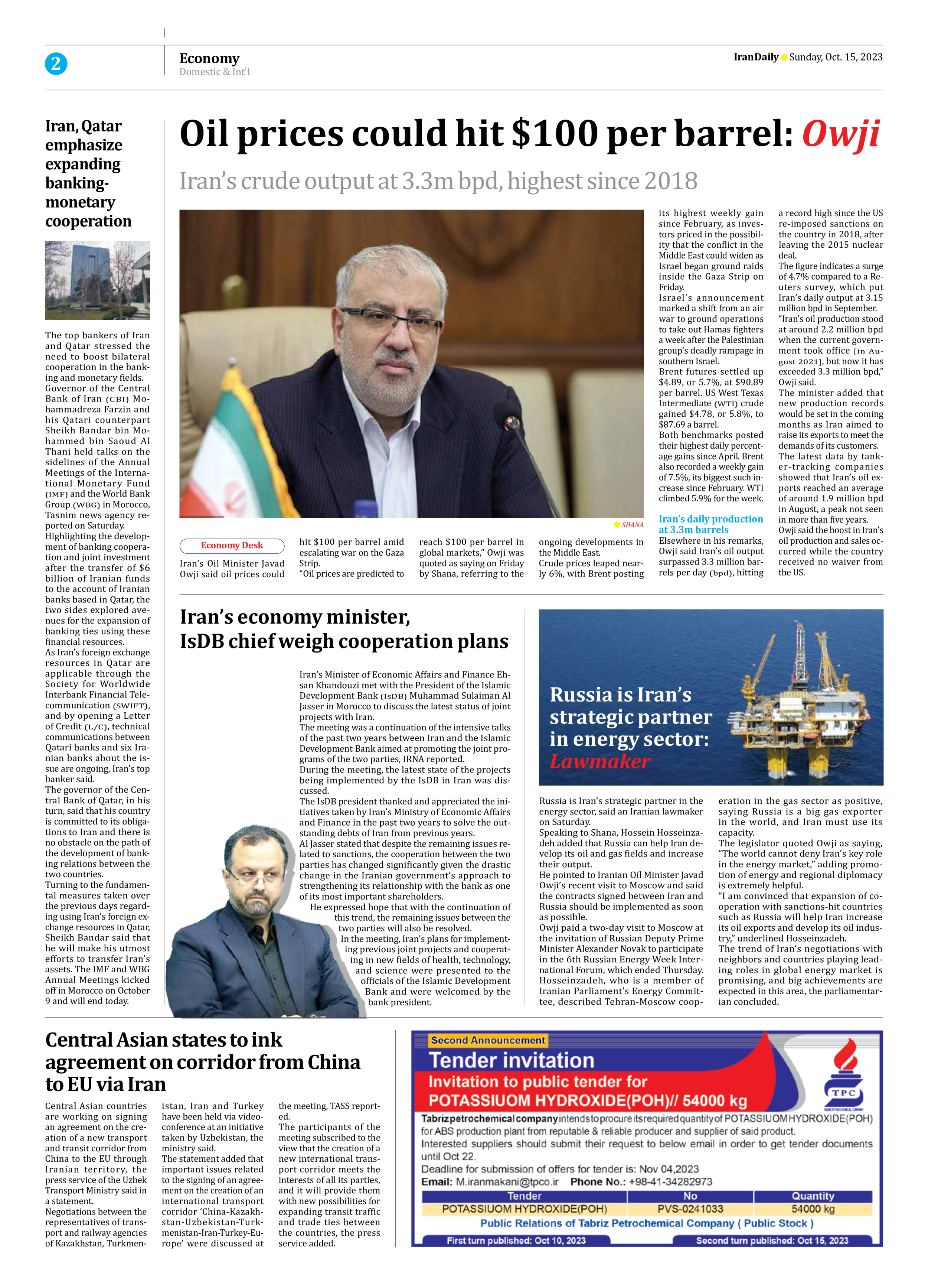
Oil prices could hit $100 per barrel: Owji
Iran’s crude output at 3.3m bpd, highest since 2018
Iran’s Oil Minister Javad Owji said oil prices could hit $100 per barrel amid escalating war on the Gaza Strip.
“Oil prices are predicted to reach $100 per barrel in global markets,” Owji was quoted as saying on Friday by Shana, referring to the ongoing developments in the Middle East.
Crude prices leaped nearly 6%, with Brent posting its highest weekly gain since February, as investors priced in the possibility that the conflict in the Middle East could widen as Israel began ground raids inside the Gaza Strip on Friday.
Israel’s announcement marked a shift from an air war to ground operations to take out Hamas fighters a week after the Palestinian group’s deadly rampage in southern Israel.
Brent futures settled up $4.89, or 5.7%, at $90.89 per barrel. US West Texas Intermediate (WTI) crude gained $4.78, or 5.8%, to $87.69 a barrel.
Both benchmarks posted their highest daily percentage gains since April. Brent also recorded a weekly gain of 7.5%, its biggest such increase since February. WTI climbed 5.9% for the week.
Iran’s daily production at 3.3m barrels
Elsewhere in his remarks, Owji said Iran’s oil output surpassed 3.3 million barrels per day (bpd), hitting a record high since the US re-imposed sanctions on the country in 2018, after leaving the 2015 nuclear deal.
The figure indicates a surge of 4.7% compared to a Reuters survey, which put Iran’s daily output at 3.15 million bpd in September.
“Iran’s oil production stood at around 2.2 million bpd when the current government took office [in August 2021], but now it has exceeded 3.3 million bpd,” Owji said.
The minister added that new production records would be set in the coming months as Iran aimed to raise its exports to meet the demands of its customers.
The latest data by tanker-tracking companies showed that Iran’s oil exports reached an average of around 1.9 million bpd in August, a peak not seen in more than five years.
Owji said the boost in Iran’s oil production and sales occurred while the country received no waiver from the US.







